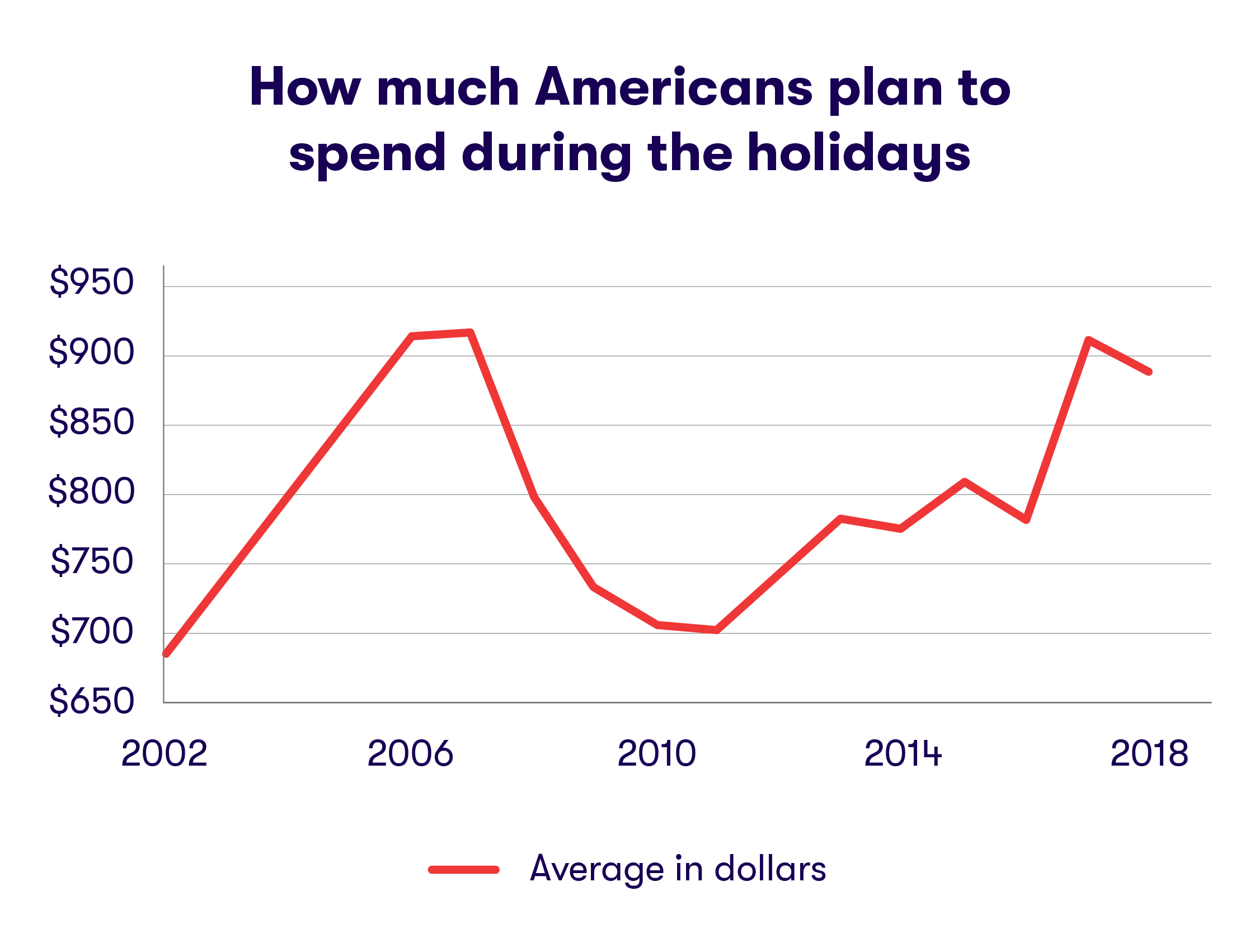Nov 29, 2018
Why the Holiday Season is The Super Bowl of Retail
The holiday season is the retail sector’s Super Bowl. And Americans are primed to spend.

The holidays are more than just a holly, jolly time of year. The stretch between Halloween and New Years—between late October and early January—is also critical to the health of the overall U.S. economy.
It’s a time during which consumers often spend like crazy. And as consumers bolt for the stores, retail companies hire additional staff to handle the additional foot traffic, and also spend money marketing—the holiday season can give the entire economy a swift kick in the rump just as the year wraps up.
Consider this: It’s estimated that U.S. consumers will spend more than $1 trillion during the holiday season in 2018. To put that in perspective, total retail sales in 2017 were $5.7 trillion, according to U.S. Census data.
Consumer spending makes up around 70% of U.S. GDP—so, again, the holiday season is critically important.
Get ready to shop ‘til you drop
The average American plans to spend nearly $900 on gifts in 2018, according to Gallup.

This is how Americans plan to spend on gifts for friends and family in 2018, according to Gallup’s data:
- 33% expect to spend at least $1,000 on gifts.
- 22% expect to spend between $500 and $999.
- 29% expect gift spending to be between $100 and $499.
- 3% plan to spend less than $100.

And we’re already in the thick of it, too.
During Black Friday, consumers spent $23 billion, according to reports, which is a 9% increase over 2017. Cyber Monday sales are expected to total up to nearly $8 billion—a 19% increase over 2017. And sales during Small Business Saturday, the day after Black Friday, also reached a record high of $17.8 billion.
Spreading the holiday cheer
Shoppers shovel money at retail companies during the holidays, but those companies also do a fair amount of shovelling themselves—spending on marketing and advertising, among the top ten retailers, topped $1.2 billion in 2017 according to industry data.
That data also shows that marketing budgets are mostly (62%) filtering to TV stations and networks. A further 21% is spent on digital advertising (social media, etc.), and radio stations and print mediums also see a small spike in advertising revenue.
Not to be a Grinch…
As tens of millions of people celebrate, and the economy typically gets its end of the year boost, there are some darker aspects to the season.
We know that the holiday months are, typically, a boom for business. But that can depend to a great degree on the state of the economy to begin with. When the economy is relatively weak heading into the holidays, consumers might pinch their pennies, and retailers might fall short of their forecasts, which can then create a ripple effect in the stock markets.
And, on an individual level, the average American racked up more than $1,000 in debt during the holidays in 2017. And 15% of them have yet to pay it off, as of November 2018.
Get a piece of the action
You can invest where you shop this holiday season using Stash. Get started with only $5.
Related Articles

15 Largest AI Companies in 2024

The 12 Largest Cannabis Companies in 2024

What Is a Traditional IRA?

Saving vs. Investing: 2 Ways to Reach Your Financial Goals

How To Invest in the S&P 500: A Beginner’s Guide for 2024

Stock Market Holidays 2024





